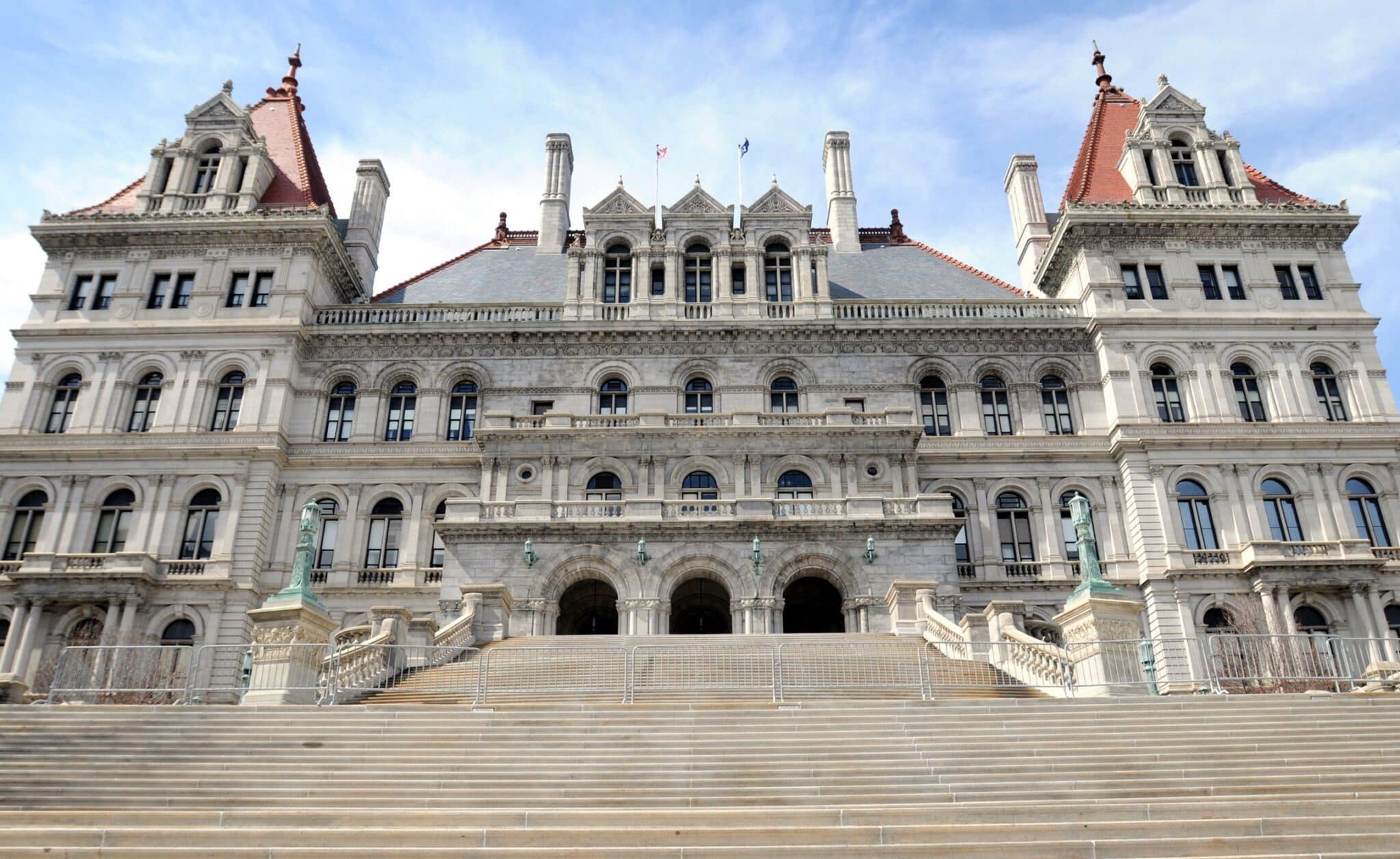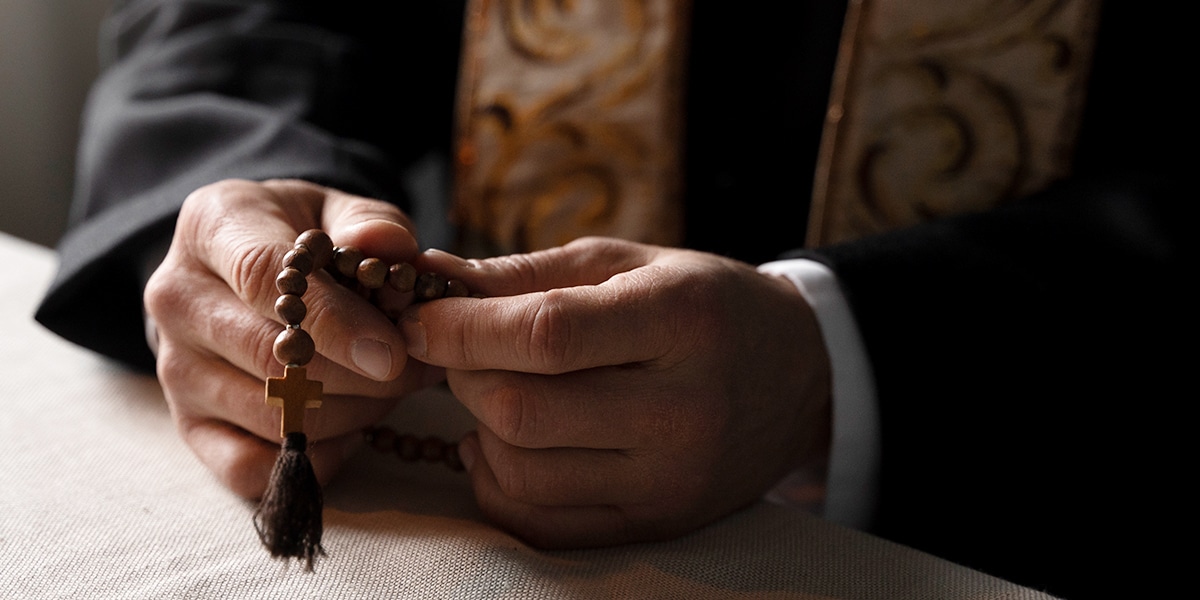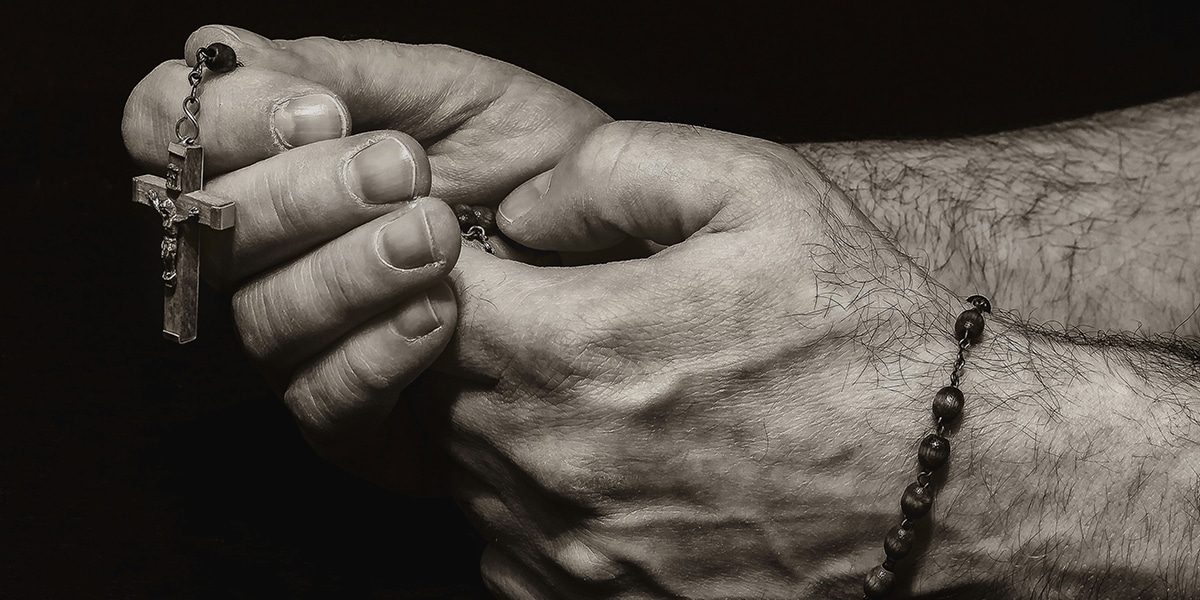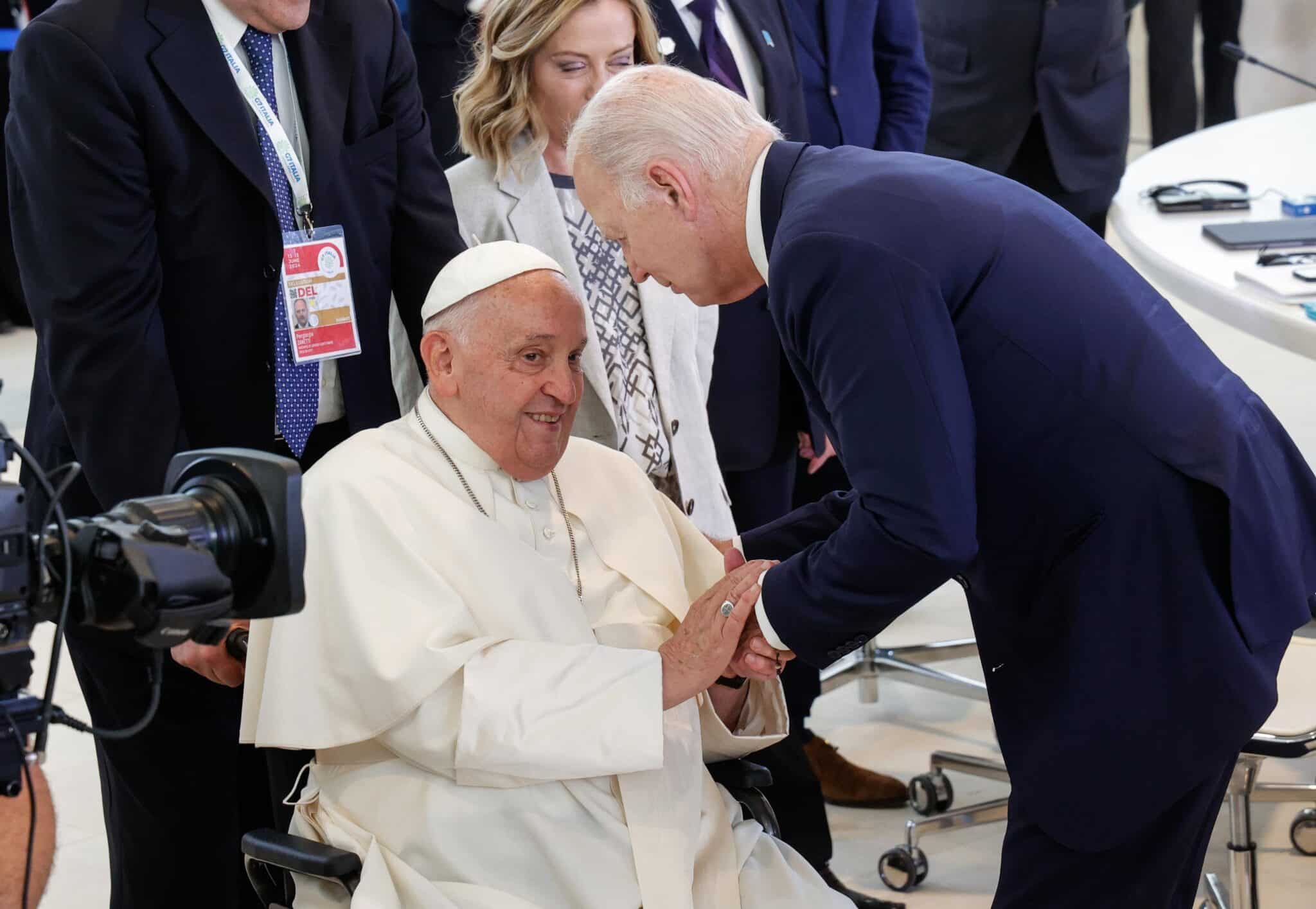(OSV News) — A call by the U.S. surgeon general for health warning labels on social media marks “one of many steps that need to be taken” to reduce the digital environment’s risks to kids and youth, said one of the heads of a mental health campaign launched by the nation’s Catholic bishops.
In a June 17 opinion piece for The New York Times, Dr. Vivek H. Murthy, the U.S. surgeon general, urged the creation of congressionally approved advisories for social media — similar to those federally mandated since 1965 for tobacco products — saying that “our children’s well-being is at stake.”
Murthy, who in 2021 sounded an alarm on the state of mental health among U.S. teens, declared that “social media is associated with significant mental health harms for adolescents.”
“Adolescents who spend more than three hours a day on social media face double the risk of anxiety and depression symptoms, and the average daily use in this age group, as of the summer of 2023, was 4.8 hours,” wrote Murthy. “Additionally, nearly half of adolescents say social media makes them feel worse about their bodies.”
Archbishop Borys A. Gudziak of the Ukrainian Catholic Archeparchy of Philadelphia told OSV News the surgeon general’s alert should be welcomed, saying, “There is sufficient evidence that the uncontrolled use of social media can be detrimental to the psychological and spiritual health of susceptible individuals.”
The archbishop, who chairs the U.S. Conference of Catholic Bishops’ Committee on Domestic Justice and Human Development, teamed up last fall with Bishop Robert E. Barron of Winona-Rochester, Minnesota, head of the USCCB’s Committee on Laity, Marriage, Family Life, and Youth to launch the National Catholic Mental Health Campaign.
With a number of partner organizations — among them, Catholic Charities USA, the Catholic Health Association, the Association of Catholic Mental Health Ministers and the National Catholic Partnership on Disability — the national campaign is raising greater awareness of the issue, to remove the sense of stigma for those suffering from mental illness, and “to advocate a clear message to all: everyone who needs help should get help.”
At the same time, “I have few illusions that such a warning label will solve the problem,” said Archbishop Gudziak.
“It is evident that the development of our communications, media and information technology is advancing faster than our capacity to ethically discern how to best use these powerful tools,” Archbishop Gudziak said, referencing recent remarks by Pope Francis to G7 leaders on artificial intelligence.
“These tools, instead of remaining mere instruments, can and already have become controlling mechanisms in many instances,” the archbishop added.
Murthy himself admitted that “a warning label would not, on its own, make social media safe for young people,” pointing to the need for federal regulation and regulatory compliance by social media companies.
Along with broad-based support from parents, peers and public health leaders, specific measures Murthy recommended include protecting young users from online harassment, abuse, exploitation, sexual content and extreme violence.
Murthy also said platforms should not be permitted to collect sensitive data from children, who should also be shielded from “push notifications, autoplay and infinite scroll, which prey on developing brains and contribute to excessive use.”
Yet making the digital world safer for kids and youth is akin to wielding a “double-edged sword,” licensed clinical psychologist James Black, director of the Youth Services Division at the Archdiocese of Philadelphia’s Catholic Social Services, told OSV News.
Black pointed to the American Psychological Association’s caution that assessing the true impact of social media on young people can be complex, saying, “On the one hand, there are certainly positive aspects (to the platforms)” — such as providing connection among marginalized or physically distant groups — along with “downsides.”
“Correlation doesn’t mean causality,” Black said. “Is it social media that’s causing (distress), or do you have kids with a tendency towards depression and anxiety most negatively impacted by overuse of social media?”
Still, said Black, social media cannot substitute for authentic, in-person human interactions — and can instead obscure a user’s overall perspective.
“People put all the great things that are happening in their lives up on social media, and it can give you this distorted sense that everyone else’s life is great — they’re going on trips, they have lots of friends, they have all these beautiful cars — but that’s a very distorted portrayal of most people’s lives,” Black said. “Most people don’t put on Facebook the struggles they’re having, the money problems, or the fact that they got fired from their job last week.”
In youth, that imbalance is magnified, he said.
“Young people might see pictures of people their age with lots of friends or at parties, and then they say, ‘Well, why wasn’t I invited to that party? Why don’t I have lots of friends? … But they may not know that half of the people in that picture fell out with each other the next day because you know somebody said something untoward at that party.”
Black also said that law enforcement are “really attuned now to monitoring social media pages,” especially to prevent teen violence — which can quickly escalate from online to in-person settings.
Parents and caretakers are crucial in helping kids and youth set boundaries with their social media use, he said.
In fact, the surgeon general’s warning is in many respects “targeted for parents,” since “young people are going to be using social media, whether there’s a warning label or not,” said Father Thomas F. Dailey, an Oblate of St. Francis de Sales and professor of homiletics and social communication at St. Charles Borromeo Seminary in Wynnewood, Pennsylvania.
Father Dailey said that the term “social media” is “a broad one nowadays,” encompassing “networking media to electronic games to video. It’s not just Facebook.”
In all of those areas, he said, “the church should certainly be present, and pushing out a good message.”
“We preach ‘health’ in an even bigger sense than the surgeon general,” he told OSV News. “We talk about salvation. And our testimony, our witness is using (social media) for all the right reasons and, and in all the best ways — even though, or maybe because, there are problems with it. We have to be there in the midst of it with … a corrective, with a positive message.”
The task is a daunting one, said Archbishop Gudziak — and the surgeon general’s call “should be welcomed” as one starting point.
“We face a difficult struggle for true human freedom and dignity,” said Archbishop Gudziak. “We need all the help we can get to be truly psychologically and spiritually free in a world increasingly dominated by social media and AI.”
By Gina Christian | OSV News







News & Commentary
Surgeon general’s social media warning ‘one of many steps’ say experts
(OSV News) — A call by the U.S. surgeon general for health warning labels on social media marks “one of many steps that need to be taken” to reduce the digital environment’s risks to kids and youth, said one of the heads of a mental health campaign launched by the nation’s Catholic bishops.
In a June 17 opinion piece for The New York Times, Dr. Vivek H. Murthy, the U.S. surgeon general, urged the creation of congressionally approved advisories for social media — similar to those federally mandated since 1965 for tobacco products — saying that “our children’s well-being is at stake.”
Murthy, who in 2021 sounded an alarm on the state of mental health among U.S. teens, declared that “social media is associated with significant mental health harms for adolescents.”
“Adolescents who spend more than three hours a day on social media face double the risk of anxiety and depression symptoms, and the average daily use in this age group, as of the summer of 2023, was 4.8 hours,” wrote Murthy. “Additionally, nearly half of adolescents say social media makes them feel worse about their bodies.”
Archbishop Borys A. Gudziak of the Ukrainian Catholic Archeparchy of Philadelphia told OSV News the surgeon general’s alert should be welcomed, saying, “There is sufficient evidence that the uncontrolled use of social media can be detrimental to the psychological and spiritual health of susceptible individuals.”
The archbishop, who chairs the U.S. Conference of Catholic Bishops’ Committee on Domestic Justice and Human Development, teamed up last fall with Bishop Robert E. Barron of Winona-Rochester, Minnesota, head of the USCCB’s Committee on Laity, Marriage, Family Life, and Youth to launch the National Catholic Mental Health Campaign.
With a number of partner organizations — among them, Catholic Charities USA, the Catholic Health Association, the Association of Catholic Mental Health Ministers and the National Catholic Partnership on Disability — the national campaign is raising greater awareness of the issue, to remove the sense of stigma for those suffering from mental illness, and “to advocate a clear message to all: everyone who needs help should get help.”
At the same time, “I have few illusions that such a warning label will solve the problem,” said Archbishop Gudziak.
“It is evident that the development of our communications, media and information technology is advancing faster than our capacity to ethically discern how to best use these powerful tools,” Archbishop Gudziak said, referencing recent remarks by Pope Francis to G7 leaders on artificial intelligence.
“These tools, instead of remaining mere instruments, can and already have become controlling mechanisms in many instances,” the archbishop added.
Murthy himself admitted that “a warning label would not, on its own, make social media safe for young people,” pointing to the need for federal regulation and regulatory compliance by social media companies.
Along with broad-based support from parents, peers and public health leaders, specific measures Murthy recommended include protecting young users from online harassment, abuse, exploitation, sexual content and extreme violence.
Murthy also said platforms should not be permitted to collect sensitive data from children, who should also be shielded from “push notifications, autoplay and infinite scroll, which prey on developing brains and contribute to excessive use.”
Yet making the digital world safer for kids and youth is akin to wielding a “double-edged sword,” licensed clinical psychologist James Black, director of the Youth Services Division at the Archdiocese of Philadelphia’s Catholic Social Services, told OSV News.
Black pointed to the American Psychological Association’s caution that assessing the true impact of social media on young people can be complex, saying, “On the one hand, there are certainly positive aspects (to the platforms)” — such as providing connection among marginalized or physically distant groups — along with “downsides.”
“Correlation doesn’t mean causality,” Black said. “Is it social media that’s causing (distress), or do you have kids with a tendency towards depression and anxiety most negatively impacted by overuse of social media?”
Still, said Black, social media cannot substitute for authentic, in-person human interactions — and can instead obscure a user’s overall perspective.
“People put all the great things that are happening in their lives up on social media, and it can give you this distorted sense that everyone else’s life is great — they’re going on trips, they have lots of friends, they have all these beautiful cars — but that’s a very distorted portrayal of most people’s lives,” Black said. “Most people don’t put on Facebook the struggles they’re having, the money problems, or the fact that they got fired from their job last week.”
In youth, that imbalance is magnified, he said.
“Young people might see pictures of people their age with lots of friends or at parties, and then they say, ‘Well, why wasn’t I invited to that party? Why don’t I have lots of friends? … But they may not know that half of the people in that picture fell out with each other the next day because you know somebody said something untoward at that party.”
Black also said that law enforcement are “really attuned now to monitoring social media pages,” especially to prevent teen violence — which can quickly escalate from online to in-person settings.
Parents and caretakers are crucial in helping kids and youth set boundaries with their social media use, he said.
In fact, the surgeon general’s warning is in many respects “targeted for parents,” since “young people are going to be using social media, whether there’s a warning label or not,” said Father Thomas F. Dailey, an Oblate of St. Francis de Sales and professor of homiletics and social communication at St. Charles Borromeo Seminary in Wynnewood, Pennsylvania.
Father Dailey said that the term “social media” is “a broad one nowadays,” encompassing “networking media to electronic games to video. It’s not just Facebook.”
In all of those areas, he said, “the church should certainly be present, and pushing out a good message.”
“We preach ‘health’ in an even bigger sense than the surgeon general,” he told OSV News. “We talk about salvation. And our testimony, our witness is using (social media) for all the right reasons and, and in all the best ways — even though, or maybe because, there are problems with it. We have to be there in the midst of it with … a corrective, with a positive message.”
The task is a daunting one, said Archbishop Gudziak — and the surgeon general’s call “should be welcomed” as one starting point.
“We face a difficult struggle for true human freedom and dignity,” said Archbishop Gudziak. “We need all the help we can get to be truly psychologically and spiritually free in a world increasingly dominated by social media and AI.”
By Gina Christian | OSV News